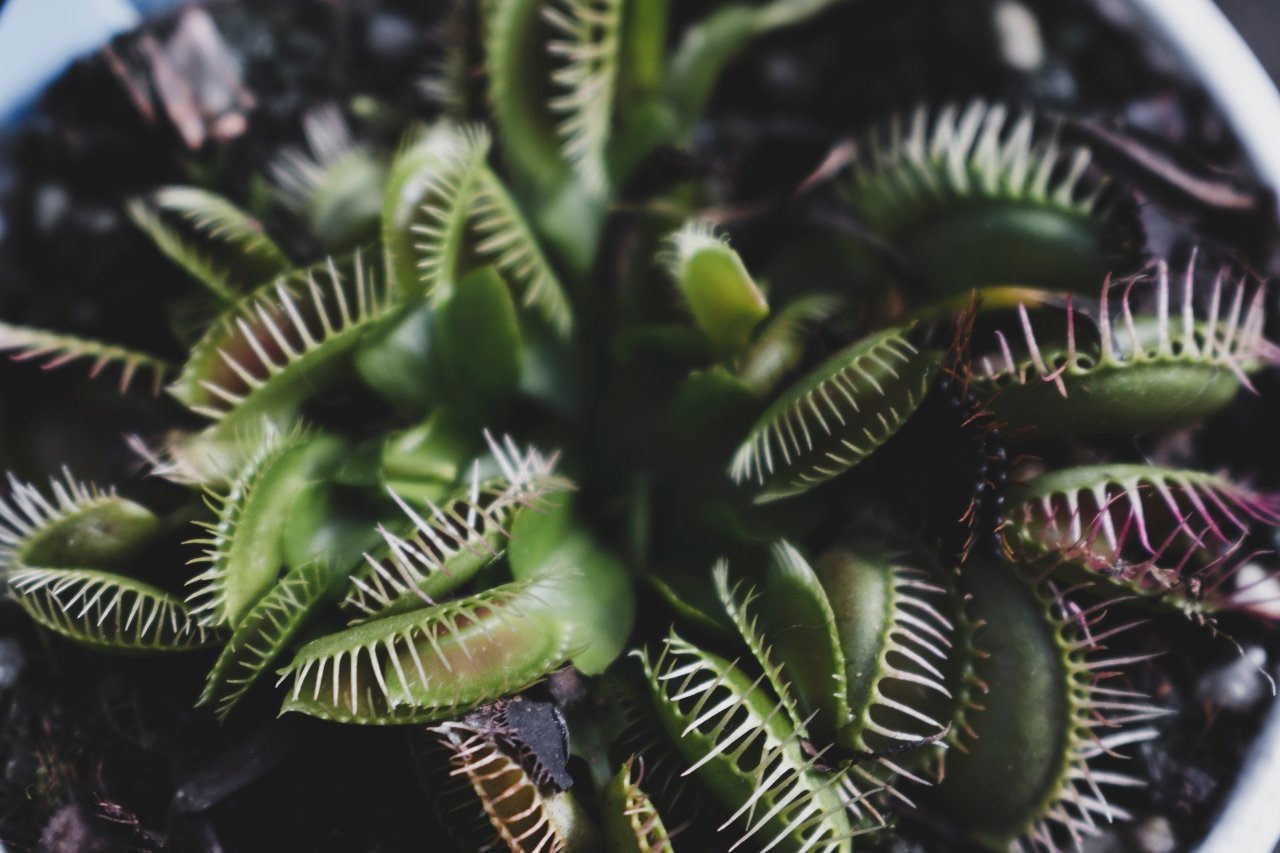If you’ve ever marveled at the wonders of nature, then the Dionaea fly trap, more commonly known as the Venus Flytrap, is sure to pique your interest. This captivating carnivorous plant is not just a pretty face; it’s an intricate marvel of evolution. With its jaw-like leaves and snap-together mechanisms designed for catching unsuspecting insects, it embodies both beauty and brutality in one alluring package.
Whether you’re a seasoned plant enthusiast or a curious beginner, growing a Venus Flytrap can be an incredibly rewarding experience. However, successfully nurturing these unique plants requires understanding their specific needs and care requirements. In this guide, we’ll explore essential tips that will help you cultivate your very own thriving Dionaea fly trap while showcasing its fascinating features along the way. Let’s dive into the world of this extraordinary carnivore!
The Fascinating Features of the Venus Flytrap
The Venus Flytrap, a marvel of nature, captivates with its unique mechanism for capturing prey. It boasts specialized leaves that resemble open jaws, lined with hair-like structures called trigger hairs. When an unsuspecting insect brushes against these hairs twice in quick succession, the trap snaps shut in less than a second.
This plant thrives in nutrient-poor environments and has evolved to attract insects for sustenance. Its bright red interior lures potential meals while its nectar guides them into the deadly embrace of its traps.
Another fascinating aspect is its ability to photosynthesize like other plants. Despite relying on insects for nutrients, it still needs sunlight to grow properly. This dual strategy showcases the incredible adaptability of this carnivorous species. The Venus Flytrap not only survives but thrives under specific conditions, making it a true wonder of botanical evolution.
7 Crucial Tips for Successful Dionaea Fly Trap Care
Caring for your Dionaea fly trap can be rewarding and straightforward. Here are seven essential tips to ensure your plant thrives.
First, light is crucial. Place your Venus flytrap in bright, indirect sunlight or under grow lights.
Temperature plays a vital role too; these plants prefer daytime temperatures between 70°F and 95°F during the growing season.
Watering must be precise. Use distilled water only, keeping the soil moist but not soggy.
Feeding is another key aspect. Offer insects occasionally during the active growth phase, ensuring they fit within the traps.
Repotting should happen every couple of years to refresh soil nutrients and provide space for root development.
Pest control involves regular checks for unwanted visitors that might harm your plant’s health.
Monitor for diseases like root rot by ensuring proper drainage and avoiding overwatering.
Tip #1: Light and Temperature Requirements
The Dionaea fly trap loves bright, direct sunlight. Aim for at least 12 hours of light daily. A sunny windowsill or a grow light can work wonders.
Temperature plays an essential role in its growth too. During the growing season, which typically spans from spring to summer, keep temperatures between 70°F and 90°F (21°C to 32°C). This warmth helps stimulate leaf production.
When fall sets in, let your plant experience dormancy by lowering temperatures to around 40°F to 50°F (4°C to 10°C). This chilling period is vital; it mimics their natural habitat and promotes healthy growth cycles.
Always monitor your Venus flytrap’s environment. If you notice leggy leaves or poor trapping activity, it might be time to adjust the light or temperature conditions. Keeping everything balanced will ensure your plant thrives beautifully.
Tip #2: Watering and Soil Needs
Watering your Dionaea fly trap is crucial for its health. These plants thrive in moist conditions, but balance is key. Use distilled water or rainwater to avoid harmful chemicals found in tap water.
When it comes to soil, choose a mix that retains moisture without becoming soggy. A blend of sphagnum moss and perlite works well. This combination allows for proper drainage while maintaining enough humidity.
Keep an eye on the soil’s moisture level. It should feel damp but not soaked. During the growing season, you might need to water more frequently as the plant becomes active and hungry.
In winter, reduce watering since the Venus flytrap enters dormancy. Adjust your care routine according to seasonal changes; this can greatly improve your plant’s vitality and growth rate.
Tip #3: Feeding the Venus Flytrap
Feeding your Dionaea fly trap is an essential part of its care. These fascinating plants thrive on insects, which provide the nutrients they need to flourish. In their natural habitat, they capture flies and other small bugs effortlessly.
When feeding a Venus flytrap at home, it’s best to mimic this process using live food whenever possible. Small insects like fruit flies or ants are ideal choices. If you can’t find live prey, dried insect snacks can be used as substitutes.
Be cautious not to overfeed your plant; one meal every few weeks is sufficient. Each trap can digest only a few meals before becoming ineffective. After catching its prey, the trap will close tightly and remain sealed for about 5-12 days while digestion occurs.
Remember that excess feeding can lead to rot or mold issues in the traps, so keep things balanced for optimal growth and health.
Tip #4: Repotting and Transplanting
Repotting your Dionaea fly trap is essential for its health and growth. Over time, the plant can outgrow its pot or deplete the nutrients in the soil.
Choose a pot that’s slightly larger than the current one, ideally around 4 to 6 inches deep. Ensure it has drainage holes to prevent waterlogging.
Use a mix of sphagnum moss and perlite or sand for optimal growing conditions. This combo mimics their natural habitat while providing excellent drainage.
When transplanting, gently remove the plant from its old pot. Take care not to damage the delicate roots. Shake off any excess soil before placing it into its new home.
After repotting, give your Venus flytrap some time to adjust before exposing it to direct sunlight again. A little patience goes a long way in helping your plant settle into its fresh surroundings comfortably.
Tip#5: Pest Control and Diseases
Keeping your Dionaea fly trap healthy means staying vigilant against pests and diseases. While these plants are hardy, they can still fall victim to common issues.
Inspect your plant regularly for signs of aphids or spider mites. These tiny invaders can weaken the leaves and stunt growth. If spotted, use a gentle insecticidal soap or neem oil spray to eliminate them without harming the plant.
Fungal infections may also pose threats, especially in humid conditions. Ensure good air circulation around your Venus flytrap by placing it in an area where airflow is unobstructed. Avoid overwatering; soggy soil invites trouble.
If you notice blackened traps or wilting leaves, act quickly—remove affected parts immediately to prevent spreading. Regular monitoring will keep your Dionaea thriving and ready to catch its next meal.
Tip #
Tip #6: Seasonal Dormancy
Understanding the seasonal dormancy of your dionaea fly trap is essential for its overall health. This plant naturally goes through a winter rest period, typically from late fall to early spring. During this time, it may lose some leaves and appear less vibrant. It’s crucial not to be alarmed by this change.
To care for your Venus Flytrap during dormancy, reduce watering significantly—just enough to keep the roots from drying out completely. Place it in a cooler location with indirect light; temperatures between 32°F and 50°F (0°C – 10°C) are ideal. By allowing your plant this necessary downtime, you’ll set the stage for robust growth when spring arrives.
Tip #7: Patience and Observation
Caring for a dionaea fly trap also requires patience and observation. These plants grow slowly compared to typical houseplants. It’s important to monitor their progress without rushing them along unnaturally.
Keep an eye on how they respond to different light conditions or watering schedules and adjust accordingly. Each Venus Flytrap has unique needs based on its environment, so getting familiar with yours will yield better results over time.
By following these seven tips closely, you’ll create an enriching environment that allows your dionaea fly trap not only to survive but thrive beautifully in your home or garden setting!

